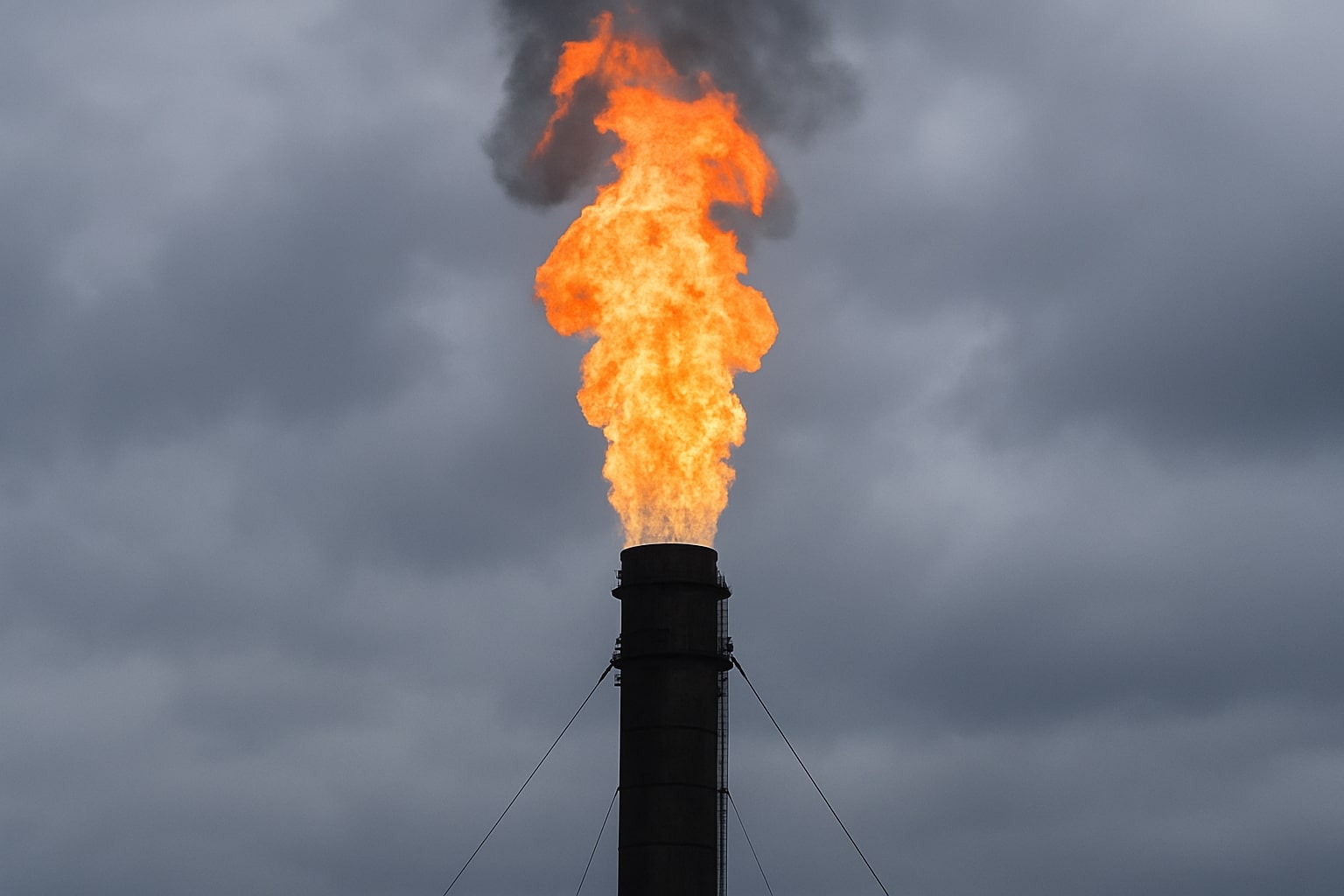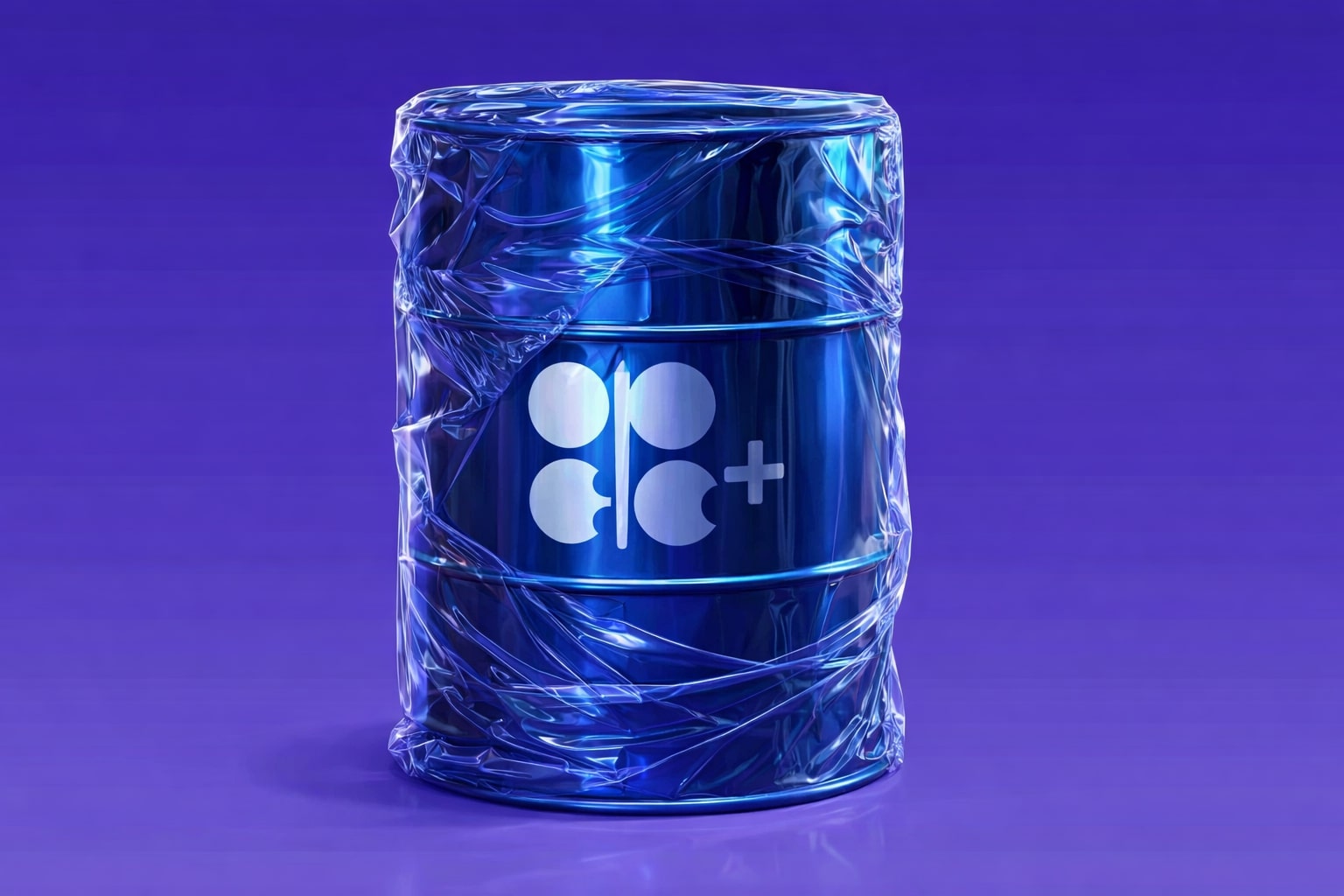
Natural Gas (NG=F) Crashes Below $3.20 Support as Supply Floods Market
Surging U.S. output, weak export recovery, and storage surplus drive Natural Gas (NG=F) into oversold territory with bearish technical signals mounting | That's TradingNEWS
NG=F Slides to $3.07 Amid Oversupply and Weak LNG Flows Despite Record Heat
Natural gas (NG=F) prices plunged 5.4% to close at $3.077 per MMBtu on Wednesday, marking the lowest settlement since April 25. Despite persistent summer heat, fundamentals have turned sharply bearish. Record-level production, sluggish LNG exports, and surplus inventory have created a trifecta of downward pressure that has driven NG=F into technically oversold territory for the first time since mid-May.
Near-Record Output Pushes Natural Gas Into Supply Glut Territory
According to LSEG data, average U.S. gas output in the Lower 48 states hit 107.3 billion cubic feet per day (Bcf/d) so far in July, surpassing the June record of 106.4 Bcf/d. This supply surge is flooding the market, even as peak seasonal power burns attempt to soak up volume. Meteorologists anticipate hotter-than-normal temperatures to continue into early August, with daily averages hitting 81–82°F by July 28–29, surpassing June's high of 80°F but still shy of the July 2022 record of 83°F. However, heat alone is failing to offset the supply pressure.
Natural Gas Inventories Remain Elevated, Undermining Price Floor at $3.20
Storage levels are now 6% above the five-year average, with analysts expecting continued injections in the coming weeks. Front-month futures breached the psychologically critical $3.20 mark and are now testing structural support near $3.00. A break below $2.90 could unleash deeper losses toward the $2.60–$2.70 zone. Despite summer demand, the ongoing injection pace threatens to prolong bearish momentum, particularly as market participants front-run storage saturation risks heading into autumn.
LNG Export Recovery Lags Behind Domestic Gas Supply Growth
LNG feed gas flows rose to 15.7 Bcf/d so far in July, recovering from June's 14.3 Bcf/d and May's 15.0 Bcf/d, yet still below April's 16.0 Bcf/d peak. Liquefaction units are only slowly returning from maintenance and unplanned outages, limiting upside for exports. The U.S. remains the world’s top LNG supplier, but this export ceiling has emerged as a bottleneck. Gulf weather threats, including a tropical disturbance with a 10% development chance, add further downside risk as storms may disrupt LNG operations and electric power demand.
European Demand Fails to Provide Relief as Norwegian Supply Stabilizes
European natural gas prices steadied this week following a sharp decline, driven by improved flows from Norway after a prior outage. EU gas storage is currently over 65% full, but still below the 5-year average of 74%. Société Générale warns that prices must remain firm to attract sufficient LNG cargoes ahead of the 2025–26 winter. However, weak transatlantic arbitrage combined with Asia's similarly priced $12/mmBtu benchmark limits export growth potential from the U.S., capping external demand upside for NG=F.
NG=F Technicals Show Breakdown Below Trend, Bearish Signals Mount
Technically, NG=F has violated the lower bound of its uptrend channel. After losing support at $3.20 and failing to find footing at $3.10, traders now eye the $3.00 handle as the next line of defense. RSI has moved into oversold territory, suggesting temporary exhaustion, but MACD momentum remains negative. If prices fall below $2.90, downside acceleration could trigger a test of $2.60, especially in the absence of bullish catalysts.
The $3–$4 trading range that defined Q2 is now being re-evaluated. Without a credible bullish reversal signal or sudden drop in production, short sellers may continue dominating the tape. Intraday action shows consistent lower highs and weak buying interest, indicating sentiment is firmly tilted toward caution.
Demand Outlook Hinges on Heat Persistence and Industrial Draws
While peak cooling demand offers temporary relief, longer-term price stabilization requires more than just hot weather. LSEG forecasts total U.S. gas demand, including exports, will increase from 105.9 Bcf/d this week to 110.1 Bcf/d next week. However, demand uplift is not sufficient to erase the storage overhang. Industrial draws and power sector burns will need to materially surprise to rebalance the market. So far, there’s no evidence of structural demand acceleration to support prices above $3.20.
Natural Gas Market Faces Structural Pressure From Global Supply Cycle
The U.S. market is caught in a global cycle of oversupply. Production in North America remains elevated, while LNG markets in Europe and Asia struggle to absorb the volume. Henry Hub cash prices slipped alongside futures, reinforcing the bearish tone. While seasonal factors still offer volatility opportunities, the broader structure suggests further downside unless LNG exports ramp meaningfully or production slows abruptly. Traders looking for a bottom should monitor Gulf weather, rig counts, and LNG maintenance cycles closely.
Verdict: NG=F Is Bearish Until $3.20 Is Reclaimed With Volume and Demand Support
All signals currently point toward a weak natural gas setup. Without a meaningful catalyst, the break below $3.20 now positions NG=F for potential continuation lower. Only a confluence of tighter supply, surging LNG flows, or surprise industrial demand could reverse this slide. Until then, rallies are likely to be sold and fresh lows remain on the table. Position: Bearish. Short-term trades possible near $3.00 with caution. Long-term buyers should wait for signs of reaccumulation above $3.20.
That's TradingNEWS
Read More
-
UCO ETF Price Forecast: Can NYSEARCA:UCO at $18.57 Ride a 2026 Oil Squeeze?
18.12.2025 · TradingNEWS ArchiveStocks
-
XRPI at $10.50 and XRPR at $14.93 Hit XRP ETF Lows While XRP-USD Holds $1.84 After 30 Days of Inflows
18.12.2025 · TradingNEWS ArchiveCrypto
-
Natural Gas Price Forecast: Henry Hub Holds Around $4 as EIA Draw Hits 167 Bcf
18.12.2025 · TradingNEWS ArchiveCommodities
-
USD/JPY Price Forecast: Pair Holds Above 155 As BoJ And US CPI Set Up A Major Break
18.12.2025 · TradingNEWS ArchiveForex



















